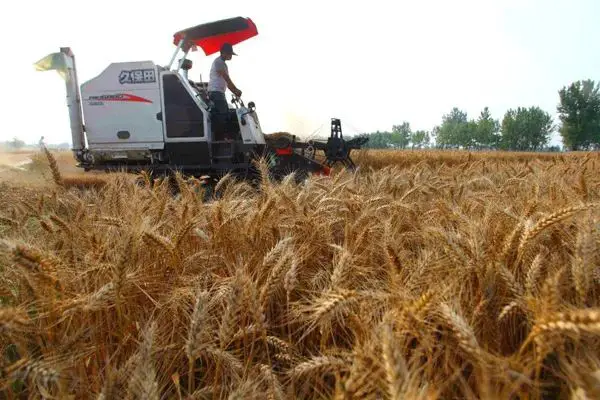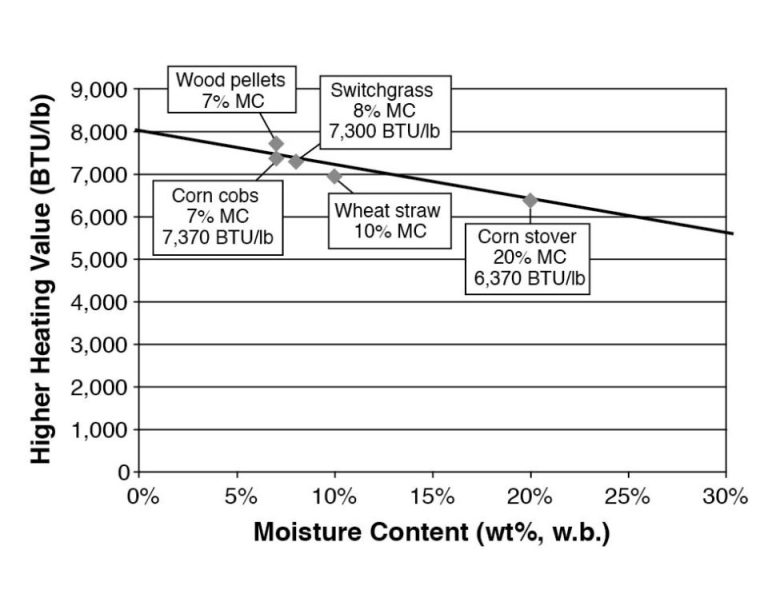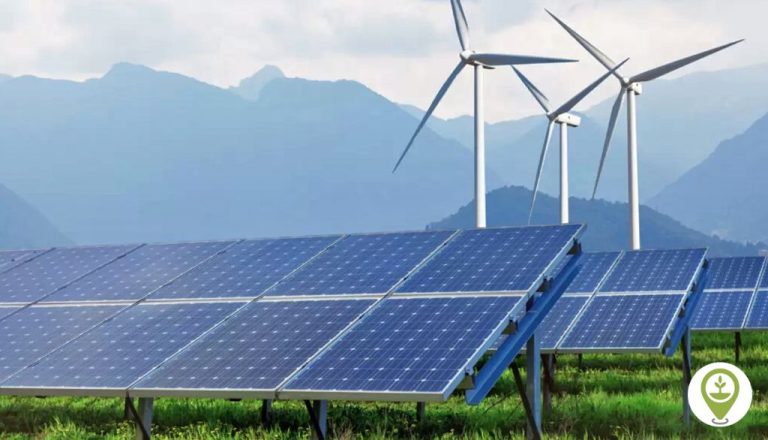How Much Of China’S Energy Is Biomass?
China’s massive population and economy have resulted in rapidly increasing energy consumption. While the country relies heavily on fossil fuels such as coal, China also utilizes renewable energy sources like biomass to meet its large energy demand. Biomass, which refers to organic matter that can be used as fuel, has become an important part of China’s energy mix.
Biomass accounts for a significant portion of China’s energy consumption. With abundant biomass resources and favorable government policies, China has substantially expanded its biomass energy production in recent years. Biomass helps diversify China’s energy supply, reduces dependence on fossil fuels, and provides environmental and economic benefits. This article will provide an overview of biomass energy in China, including its sources, uses, production, share in the energy mix, and relevant policies.
Definition of Biomass
Biomass refers to organic material that comes from plants and animals. This includes wood, crops, seaweed, manure, and other waste. Biomass contains stored energy from the sun. When the organic matter is burned, the chemical energy is released as heat and can be used to generate electricity and other forms of power.
The most common forms of biomass used for energy include:
- Wood and wood processing waste – sawdust, timber slash, wood chips, bark, and black liquor from paper manufacturing
- Agricultural residues – corn stover, sugarcane bagasse, orchard prunings, food processing waste
- Food, yard, and wood waste from municipal solid waste collection
- Dedicated energy crops like switchgrass that are fast growing plants raised specifically for energy production
- Animal manure and human sewage
Using biomass as an energy source is carbon neutral because the plant matter absorbs carbon dioxide as it grows and then emits it again when burned. This makes biomass a renewable and sustainable energy solution.
Sources of Biomass in China
China has abundant sources of biomass that can be utilized for energy production. The main sources of biomass in China are:
Agricultural Waste
China is the world’s largest agricultural producer and as such generates massive amounts of agricultural residues and waste each year. This includes crop residues like wheat straw, corn stalks and husks, rice straw and husks, peanut shells, and sugarcane bagasse. It also includes animal manure from livestock like pigs, chickens, and cows.
Forestry Waste
China has large forestry resources that produce significant biomass waste in the form of wood chips, sawdust, logging residue, tree trimmings, and more. This results from forestry activities like timber production, land-clearing, and forest management.
Municipal Waste
With a population of over 1.4 billion, China produces massive amounts of municipal solid waste. Organic components like food waste, paper, wood, and textiles can be sourced from landfills or sorted municipal waste streams as feedstock for biomass energy.
Uses of Biomass in China
Biomass energy is used in various applications across China. The three main uses are for heating, cooking, and electricity generation.
Heating
Biomass resources like crop residues, firewood, and animal manure are burned directly to provide heating and cooling in rural households across China. Burning biomass for heating is an affordable and accessible option for many rural communities.

Cooking
Fuelwood and charcoal are commonly used as cooking fuels in rural households in China. Traditional biomass cookstoves are still relied upon by millions of households for daily cooking and water heating needs.
Electricity Generation
Solid biomass like agricultural residues are used to generate electricity in biomass power plants. China has several biomass power plants with a combined installed capacity of over 13 GW as of 2020. The biomass power sector is growing steadily with government support.
Biomass Energy Production in China
China is the world’s leading producer of biomass energy. The country produces over 700 million metric tons of biomass each year. The main sources of biomass in China are agricultural residues like corn stalks, rice husks, wheat straw, as well as forestry waste, municipal solid waste, and animal manure.
China utilizes biomass through both traditional uses like burning wood, crop residues and dung for cooking and heating homes as well as modern bioenergy technologies like anaerobic digestion to produce biogas and thermal conversion processes to generate electricity. It is estimated that nearly 70% of biomass in China comes from agricultural waste.
According to China’s National Energy Administration, the country generated over 15 billion kWh of electricity from biomass in 2020. This accounts for about 1% of China’s total electricity generation. The main biomass feedstocks used for power generation are agricultural waste, forestry waste and municipal solid waste.
Over the past decade, China has made large investments to scale up its biomass power capacity. The installed capacity tripled between 2010 to 2020, reaching 17 GW. The Chinese government has set a target to expand biomass power capacity to 30 GW by 2030 as part of its efforts to increase renewable energy and reduce carbon emissions.
Share of Biomass in China’s Energy Mix
Biomass accounts for approximately 14% of China’s total energy consumption as of 2020. This makes biomass a significant contributor to China’s overall energy portfolio, behind only coal and oil. The majority of biomass energy in China comes from agricultural residues and firewood/wood pellets used for heating and cooking, especially in rural areas. Biomass power generation, using materials like crop straw and forestry waste, accounts for around 3% of China’s electricity output. While the share of biomass has declined slightly in recent years as other sources like natural gas and renewables expand, it still plays a vital role in meeting China’s energy needs due to its abundance and renewability.
Biomass Energy Policy in China
The Chinese government has implemented several policies and initiatives to promote and regulate biomass energy production and use in China. Some key policies include:
Renewable Energy Law (2005) – This law requires power grid companies to purchase all renewable electricity generated, including from biomass. It also offers financial incentives like tax breaks and subsidies to renewable energy projects.
Medium and Long-Term Development Plan for Renewable Energy – China aims to increase non-fossil fuels to 15% of primary energy consumption by 2020 and 20% by 2030. This includes specific biomass energy generation targets.
13th Five-Year Plan (2016-2020) – The plan set a goal of increasing biomass power generation capacity to 15 GW by 2020, up from 8 GW in 2015. There are also plans to upgrade rural biogas facilities.
National Carbon Market – China launched a national carbon market in 2021 that puts a price on carbon emissions. This helps make biomass energy more cost-competitive compared to fossil fuels.
Subsidies and Tax Incentives – The government offers direct subsidies, discounted lending rates, tax exemptions, and other financial incentives for biomass projects, especially in rural areas.
Through these policies, China aims to continue expanding its use of biomass energy to reduce fossil fuel reliance and carbon emissions.
Benefits of Biomass Energy
Biomass energy offers several key benefits that make it an attractive renewable energy source for China:
Renewable: Biomass is considered a renewable energy source because the fuel comes from organic materials that can be replanted and regrown. This includes agricultural residues like wheat stalks and rice husks, forestry residues like wood waste, and animal manure. As long as the biomass material is produced sustainably, the fuel source can be renewed indefinitely.
Reduces Waste: Using agricultural, forestry and animal waste streams for energy production reduces waste disposal while also generating electricity and heat. This is an efficient use of discarded organic materials that would otherwise be landfilled.
Energy Security: Relying on domestically produced biomass can improve China’s energy security and reduce imports of fossil fuels like coal and oil. Biomass fuel availability is not subject to global price fluctuations in the same way as coal, oil and natural gas.
Challenges of Biomass Energy
While biomass energy has several advantages, it also comes with some challenges that need to be addressed. These challenges include:
Pollution
Using biomass for energy can contribute to air pollution if not managed properly. Burning biomass fuels like wood, municipal solid waste and agricultural residues often emits pollutants like particulate matter, carbon monoxide, volatile organic compounds and nitrogen oxides. These emissions can negatively impact human health and the environment. Sustainable practices and emission control technologies are needed to minimize pollution.
Low Efficiency
The efficiency of biomass energy systems is often quite low compared to other renewable energy technologies. For example, the efficiency of producing electricity from biomass combustion is typically only around 20-40%. More efficient conversion technologies like gasification and pyrolysis are being developed but are not yet widely adopted. Improving biomass energy efficiency remains an important challenge.
Supply Limitations
While biomass resources are renewable, their supply can be limited in some contexts. Sustainable management of biomass resources is crucial to prevent depletion. Competition from other sectors that utilize biomass, such as food, can also constrain supply for energy purposes. Developing biomass supply chains and promoting resource efficiency are key to addressing potential limitations.
Conclusion
In summary, biomass energy, primarily from crop residues and firewood, accounts for around 15% of China’s total energy consumption. This makes China the world’s largest consumer of biomass energy in absolute terms. The majority of biomass use in China is for residential heating and cooking, particularly in rural areas. Going forward, China aims to modernize and scale up its use of biomass through technologies like biomass power generation, biogas, and biofuels. The government has implemented policies to support these efforts as part of its renewable energy push. However, China faces challenges in sustainable biomass production and utilization. Overall, biomass energy will continue to play a key role in China’s diverse energy mix, especially as the country pursues its carbon neutrality goals. Further technological developments and policy support can help China maximize the benefits of biomass energy while minimizing its limitations.





